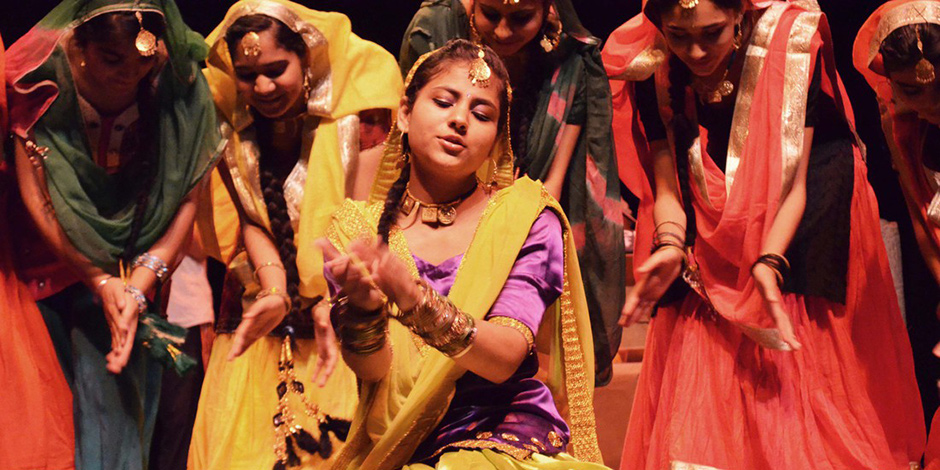
Tamejavi festival in Fresno, California. Eduardo Stanley /
Art has the power to reach—and move—people beyond what traditional education and organizing can do. And today, a growing number of activists around the world are using art to challenge war and militarism in their communities.
On March 30, AFSC staff members Minerva Mendoza, Tabitha Mustafa, and Erin Polley joined media relations director Alexis Moore for “Cultural organizing: Art as a tool for social change,” a live-streamed discussion. Here’s a recap.
How AFSC programs are using art and cultural organizing in Fresno, Indianapolis, and New Orleans
Minerva Mendoza, program associate with AFSC’s Pan Valley Institute in Fresno, California, talks about the cultural organizing work happening in the Central Valley through the Tamejavi Culture and Arts Series and how it helps build stronger, more active communities.
Tabitha Mustafa, program associate with AFSC’s Peace by Piece program in New Orleans, is a native New Orleanian who integrates cultural elements in her community organizing work.
Erin Polley, program associate with AFSC’s Indiana Peacebuilding Program, is using two traveling AFSC exhibits in her organizing work: Boycott: The Art of Economic Activism and Humanize Not Militarize. The websites for both exhibits include resources and contact information for those interested in bringing the exhibits to where they live.
Art and cultural organizing can help build trust among different immigrant groups
The work in Fresno involves many different immigrant groups. Art can bring these groups together and help people see their commonalities instead of their differences.
Why art and culture are important to social change work
Art can help get conversations started around difficult topics, and artists and cultural workers often help shape public sentiment on sensitive issues.
Imagine the Civil Rights Movement without freedom songs. Art can help propel social movements forward.
How to set goals when doing cultural organizing work
Since art is one way to achieve narrative change, it can take years to see results, Erin says. But there are other ways to set goals when using art as part of organizing work.
What does success look like for the cultural organizing work in New Orleans?
In New Orleans, using the arts to organize communities is coupled with other forms of organizing, including efforts to effect policy change.
The community-building power of art and cultural organizing
Ultimately, art and cultural organizing are human rights that challenge histories of invisibility and oppression. Cultural organizing allows communities to claim their rights and identities.
Recommendations for how to get started with cultural organizing
Tabitha says that the bottom line for getting started with cultural organizing is not to force the issue and to take the lead from the people with whom you’re working.
More: Watch the full video "Cultural organizing: Art as a tool for social change"